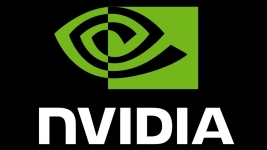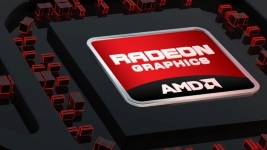In addition to Google, NASA and Lockheed Martin, among others, are currently experimenting with a D-Wave quantum computer. Can you tell us what they actually do with the machine?
Let me start with Lockheed Martin, as they were our first customer. They bought the machine to help work on software verification and validation for aircrafts that they produce. You know, in today’s aircrafts, there are a lot of computers, controls and control surfaces, and therefore they have to verify that all those are working together. There is a way to use this machine where you can sort of run it backwards. In other words, you can do an inverse problem, if you will. So they’ve created a simplified simulation of an aircraft system and basically they can then give our machine an answer and ask what inputs would cause that answer, by running it backwards, in an inverse way. For instance they give it a bad answer, a condition where the pilot pulls back on the stick and instead of the airplane going up it goes down. They run this problem the other way around and see if there are any inputs that would cause that to happen.
Regarding Google, what they mainly do is, as I said before, machine learning – mostly oriented toward Google Glass. Before, with Google Glass, if you wanted to take a picture of something, you could speak to it or you could touch it. But they wanted to make it even simpler so they said “if I were looking at something through my Google Glass, can Google Glass recognize a wink as a request to take a picture of what I’m looking at?” They couldn’t get that to run on traditional computers, so they used the D-Wave machine to try to differentiate between a wink and just a normal blink. They got that to work and the blink detector is what is working on Google Glass today.
Do you mean there is a D-Wave chip in Google Glass?
No. Like we in the car recognition example, Google used our machine to try to figure out how to tell the difference between a wink and a blink, and they came up with a set of classifiers. They then took these classifiers and put them back on the Google Glass running on the traditional machine. The idea, here, is that the D-Wave machine trained the conventional machine to recognize a wink.
And how about NASA?
NASA is doing general research projects. One of the first ones that they have is that they’re going back through a whole bunch of data seeing if they can use the quantum computer to recognize exoplanets, planets that might be similar to ours, that might be able to support life. They’re going back looking through all this data – and of course they’ve done that using HPC machines – to see if the quantum computer, looking at it a little differently, can recognize other planets that they haven’t found in their data yet.
Generally speaking, what kind of science is quantum computing more appropriate for? For instance, would a quantum computer be able to solve oil and gas reservoirs, things like that?
Perhaps in the long-term, but not today. Again, our machine is a specialized machine that fundamentally solves optimization problems. The things it’s good at today are optimization, machine learning and probably Monte Carlo. For optimization, it could be scheduling problems like Federal Express might have or setting up a satellite to take images of the Earth or if you have a financial portfolio, optimizing that financial portfolio.
Then, machine learning is a whole huge area of its own. Recognizing objects and images, detecting differences and anomalies looks like a big application area for us. Given its image detecting capabilities, the machine will be used to look at images, whether those are images in oil and gas or satellite surveillance or this kind of things. But this is probably a long way away in production mode.
I think we’ll first see more applications in optimization and machine learning and in defense and intelligence at the national laboratories, universities, financial institutions, big web places. Those are probably where the next set of customers will come from.
Correct me if I’m wrong but quantum computers are not expected to replace conventional computers anytime soon, if ever. Now, in your opinion, when are they supposed to start becoming available to a wider audience of early adopters?
To the extent that our machine interacts with an HPC machine or a data analytics engine, it’ll progressively become more general purpose. But honestly, I don’t foresee a standalone quantum system in the next 10 or 15 years. I think quantum systems will be part of a constellation of machines in a network, and I do believe that over that period, quantum machines will become more heavily used in the application areas we mentioned. As we create better hardware, connectivity and more qubits, as we create better software tools and more algorithms get ported to it, we’ll see their use increasing. As soon as the software tools and algorithms get a little more advanced, we’ll also have some machines in the Cloud somewhere to make them more available. As universities and national laboratories start buying them, then more people will be using them. But since these machines are so fundamentally different, I guess it will take at least 10 years for them to become more generally useful.
Now, in a co-processing context, we’re there. There are production computers that organizations bought. We have two installed in customer sites today and we have some other customers who are running on machines that we have installed in-house. Our hope is that we’ll find two or three more customers over the next year, and the next year twice as many as that. We think we can have a business that in rough numbers is probably going to start doubling every year.
The use cases and customers we talked about so far are US based but what’s going on in Europe? Can you give us an estimate of today’s investments in quantum computing in both regions?
The two numbers I know for sure are that D-Wave has invested about 130M$ to get to where it is today and that the U.K. has a 270M£ program over the next 5 years. Various research programs going on in the US and Canada are oriented around quantum computing – programs within the defense industry as well as with the National Science Foundation – and I guess there’s maybe 20 to 25M$ spent on them. Then there are some other specific research programs going on in Australia, some in the Far East and elsewhere in Europe. The U.K. program, by the way, isn’t all about quantum computing. It’s about quantum devices, quantum communications, all of those things.
And what about Asia?
Honestly I don’t know too much about Asia. As you pointed out, the bulk of our business is in the U.S. today. Over the next few years though, my guess is that we’ll end up with half of our business in the US, probably 30% in Europe and then probably 20% in Asia and elsewhere in the world. We were just at the International Supercomputing Conference in Leipzig and that’s the first time we’ve ever done anything in Europe. We’ve just had a fellow join us in the U.K. to help start prospecting and looking after customers there as well as in continental Europe. By the way, if you have any leads, they’re welcome…
© HPC Today 2024 - All rights reserved.
Thank you for reading HPC Today.































